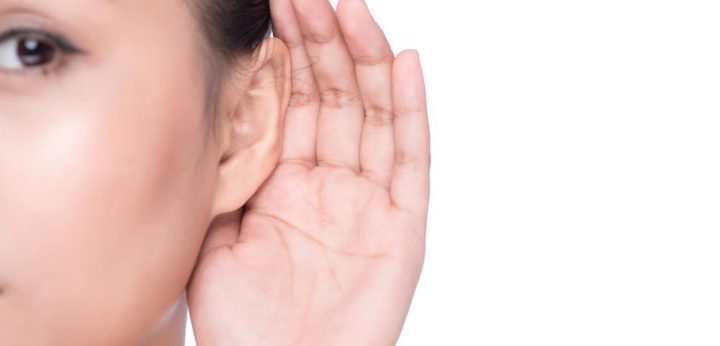Sanfilippo Syndrome and Hearing Loss
Written by |

Hearing loss is a common symptom for people with Sanfilippo syndrome. This article offers insight about ways in which the disease can affect hearing, and also offers information about how doctors may treat hearing problems in those patients.
Hearing basics
Hearing is a complex process. It involves the three major components of the ear: the outer ear (pinna), middle ear, and inner ear (cochlea).
The pinna collects sound waves that travel through the air. It then funnels the waves into the ear canal where they travel to the tympanic membrane (eardrum).
The sound waves vibrate the eardrum, which is attached to three bones called the ossicles. The ossicles pass the vibrations of the eardrum through the middle ear and into the cochlea through another membrane called the oval window.
The vibrations then enter the cochlea. The cochlea is full of a fluid that moves back and forth with the vibrations, stimulating special nerve cells called hair cells. The hair cells convert the movement of the fluid into electrical impulses that nerve cells send to the brain, which interprets them as sound.
How Sanfilippo syndrome may cause hearing loss
The exact cause of hearing loss in Sanfilippo syndrome is not clear. Researchers think it may be the result of progressive damage to the central nervous system (brain and spinal cord) due to the buildup of heparan sulfate in nerve cells and other tissues.
Clinical reports of patients with Sanfilippo syndrome have shown that the most common form of hearing loss in Sanfilippo syndrome patients is sensorineural (caused by damage to the hair cells and nerve cells).
Earlier in life, patients may have more issues with conductive hearing loss. This occurs when there are problems with the transfer of the sound waves and vibrations through the ear. Otitis media (middle ear infections), which are very common in children with Sanfilippo syndrome, could lead to conductive hearing loss. This could be due to the swelling and extra fluid buildup in the middle ear. Ear infections also may lead to damage in the eardrum and a buildup of scar tissue around the ossicles, interfering with the transfer of vibrations through the ear.
Diagnosing hearing loss
If your child has Sanfilippo syndrome you should look for signs of hearing loss. These could include not startling to loud noises, not turning to the source of noises by 6 months old, or seeming to hear only certain sounds. If doctors suspect hearing loss, they will screen them for hearing, including examining their pinna for blockages or other issues.
If you have a newborn or infant, doctors may then conduct an otoacoustic emissions or auditory brainstem response test. In the otoacoustic emissions test, they will play a sound and then listen for a quiet sound in response that is caused by vibrations of the hair cells inside the ear. The auditory brainstem response test involves placing electrodes on the baby’s head, playing sounds, and looking for changes in the electrical signals of the brain. Doctors can conduct both tests while the baby is asleep.
For older children, the doctor will conduct a pure-tone test. Here, they play single tones for the child, who is instructed to give a response such as raising their hand when they can hear a tone.
Sometimes it can be difficult to detect hearing loss in children with Sanfilippo syndrome. This is because several of the signs of hearing loss also are symptoms of the disease itself, such as delayed or unclear speech. The behavioral problems that children with the disease may have also can make the detection and diagnosis of hearing loss difficult.
Are there treatments?
Physicians use a a variety of means to treat hearing loss. For sensorineural hearing loss, patients may need a hearing aid to help compensate for the loss of some hair cells. If the hearing loss is due to a total loss of the hair cells, then a cochlear implant, which stimulates the nerve cells directly, may be necessary.
To treat problems caused by infections, doctors may prescribe antibiotic/antifungal medications.
For obstructive issues, surgery may be necessary to correct any damage.
Last updated: Dec. 16, 2020
***
Sanfilippo Syndrome News is strictly a news and information website about the disease. It does not provide medical advice, diagnosis, or treatment. This content is not intended to be a substitute for professional medical advice, diagnosis, or treatment. Always seek the advice of your physician or other qualified health provider with any questions you may have regarding a medical condition. Never disregard professional medical advice or delay in seeking it because of something you have read on this website.




